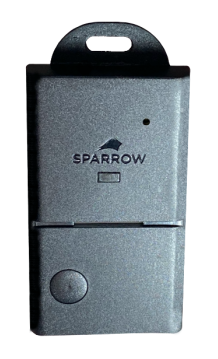146 shows, 44 songs, 5 continents, 3 hours, 2 surprise songs. Sound familiar? The culture phenomenon is called the Eras Tour – a journey through all her musical eras. Her demand and economic growth in the United States alone has caused International leaders to write to her, asking her to add their country to her tour.
She is the music industry. She is Taylor Swift.
You might ask yourself, where is this blog post going? And why would a gas detection page care about Taylor Swift? Your answer: our marketing manager is a Swifty! Now…back to the blog…
When you attend the Eras Tour, you’re there to enjoy the music, connect with other Swifties, and create unforgettable memories. You trade the friendship bracelets! Amidst the excitement and camaraderie, there’s a silent guardian working diligently to ensure your safety: gas detection systems. These unassuming but crucial devices play a vital role in safeguarding the well-being of Swifties, Taylor Swift, event staff and her wonderful crew! In this comprehensive exploration, we unveil the world of gas detection at concerts and delve into its multifaceted significance.
The Science Behind Gas Detection
Gas detection is an essential aspect of event safety, involving the use of specialized systems designed to monitor the air for the presence of potentially harmful gases. These systems are programmed to detect specific gases and sound alarms or alert authorities if gas levels exceed safe thresholds. The choice of gases to monitor depends on various factors, including the event location, the equipment in use, and potential risks. Here’s a closer look at how gas detection ensures your safety during concerts:
- Carbon Dioxide (CO2): Picture the vibrant energy of a packed indoor concert venue, where music and excitement fill the air. As attendees breathe and share the same space, carbon dioxide levels can rise due to the high concentration of exhaled breath. While low levels of CO2 are generally harmless, elevated concentrations can lead to discomfort, dizziness, and even fainting. CO2 sensors play a crucial role by ensuring that ventilation systems maintain optimal air circulation, guaranteeing a comfortable and safe environment.
- Carbon Monoxide (CO): Some concert venues utilize fuel-burning equipment, such as generators or heaters, to power various aspects of the event. In such settings, the risk of carbon monoxide exposure becomes a concern. Carbon monoxide is a silent threat – colorless, odorless, and potentially life-threatening in high concentrations. Detecting CO leaks is essential for preventing poisoning and ensuring the safety of everyone present.
- Toxic Gases and Hydrogen Sulfide (H2S): Depending on the event’s location and its proximity to industrial areas or other sources, there may be a need to monitor for toxic gases like hydrogen sulfide. These gases can emerge from industrial processes or nearby activities, and timely detection is crucial for a swift and appropriate response.
- Fire Safety: Gas detection systems often go hand in hand with fire safety measures. They are integrated with fire alarm systems, capable of detecting gases produced by fires, including smoke and combustion byproducts. This integration triggers alarms and evacuation protocols, enhancing overall event safety.
- Emergency Preparedness: Behind the scenes, concert organizers and venue management develop comprehensive emergency plans that incorporate gas detection as a critical component. These plans ensure that well-coordinated actions are taken in case of gas leaks, fires, or other unforeseen emergencies.
- Outdoor Events: While gas detection is more commonly associated with indoor venues, it’s also relevant for outdoor concerts and festivals. Depending on the event setup and equipment, monitoring for gases like propane or other fuel-related vapors may be necessary, especially if generators, food trucks, or other machinery are in use.
A Comprehensive Safety Strategy
Gas detection systems are pivotal but represent only one facet of a broader safety strategy for concerts and large events. Proper planning, emergency protocols, crowd management, and coordination with local authorities are equally essential components. Concert organizers and event planners work tirelessly to create an environment where attendees can enjoy themselves without worrying about potential hazards. Regulations and practices may vary based on the event’s location, size, and type, underscoring the importance of tailoring safety measures to suit each unique circumstance.
Conclusion: Unseen Guardians of Unforgettable Experiences
As you lose yourself in the music, the light up bracelets, and the shared euphoria of listening to your pick as a surprise song, it’s easy to overlook the behind-the-scenes efforts dedicated to your safety. Gas detection systems silently operate, diligently monitoring the air to ensure that you can fully immerse yourself in the experience without concern. Concert organizers and safety experts collaborate to orchestrate a symphony of precautions, from gas detection to emergency plans, all working in harmony to create a secure and enjoyable environment. If you are lucky enough to get a Ticketmaster code, “take a moment and taste it, you’ve got no reason to be afraid” because you’re not on your own kid, you never have been!


